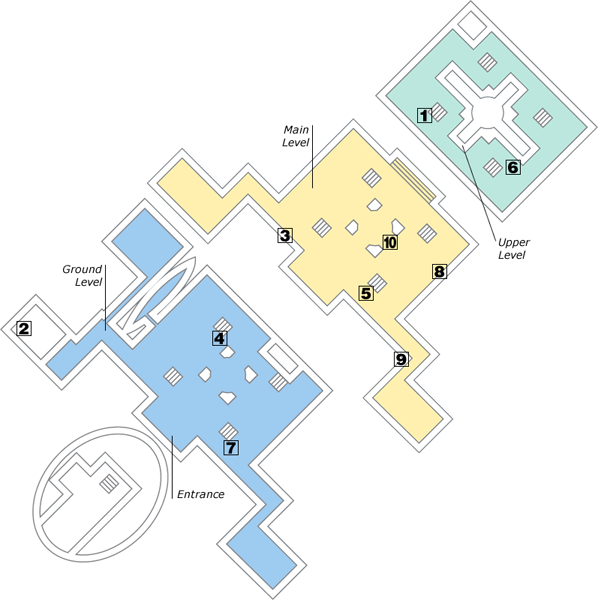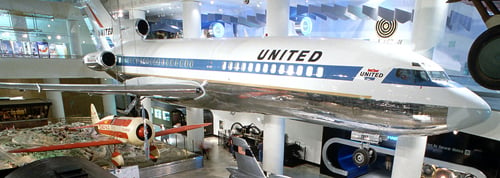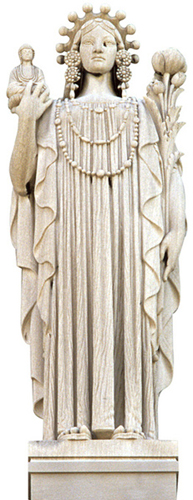Exhibits

Museum Floorplan
Transportation Zone
A
full-size Boeing 727 and a British World War II fighter plane dangle
dramatically above a steam locomotive and the world’s fastest land
vehicle, while visitors explore the forces of flight via computer games
and videos.

Boeing 727, Transportation Zone
U-505
Artifacts,
archival footage, and interactive challenges bring to life this
restored U-505 German submarine. Optional on-board tours of the boat are
available.
Genetics: Decoding Life
Explore
the complex and controversial world of genetics and genetic engineering
and learn how cloning is possible, while viewing real cloned mice.
The Farm
Learn
about life on today’s farms and the modern technologies that get food
from the field to your table. Children can ride in a real combine and
take part in a cow-milking challenge.
Networld
The binary world of cyberspace comes alive here via educational yet fun hands-on displays.
AIDS: The War Within
Replicas of enlarged human cells vividly illustrate the in-depth workings of the HIV virus in this highly educational exhibit.
Ships Through the Ages
Here,
model ships chart marine transportation from Egyptian sailboats through
to modern ocean liners. Highlights include scale versions of
Christopher Columbus’ three ships.
Petroleum Planet
The
journey from pipeline to polymers is told from an oil molecule’s
perspective, ending in a huge display of by-products, from running shoes
to chewing gum.
Communications Zone
The
Whispering Gallery illustrates how sound-waves make even the faintest
whisper audible at the other end of a room, while the World Live Theater
lets visitors witness TV broadcasts being beamed in from around the
world.
Enterprise
Interactive
scenarios allow visitors to climb into the shoes of a fictional CEO to
lead a toy manufacturing company through important business decisions.
The Museum’s Origins
Built as the Palace of Fine
Arts in 1893, the Museum of Science and Industry is now the only
building left from Daniel Burnham’s vast “White City.” This was
constructed for the World’s Columbian Exposition, which marked the 400th
anniversary (albeit one year late) of Christopher Columbus’ arrival in
the New World. Burnham,
the Director of Works for the fair
, commissioned architects like Charles Atwood to create structures
that would showcase the best in design, culture, and technology. The Field Museum
inhabited the building until the 1920s when it moved to its present-day
Museum Campus home. Sears Roebuck retail chief Julius Rosenwald then
decided that a fortified palace, stripped to its steel frame and rebuilt
in limestone, would be the perfect home for a new museum devoted to
“industrial enlightenment” and US technological achievements.
Appropriately, the Museum debuted in 1933 when Chicago hosted its next
World’s Fair, the Century of Progress Exposition.

A stone figure on the Museum

The Museum as it stands today
Midway Plaisance, first separate amusement area at a world’s fair
Jackson Park, landscaped by designer Frederick Law Olmsted
Exotic Dancer “Little Egypt” in the “Streets of Cairo” exhibit
Nickname “Windy City” introduced
A 1,500 lb (680 kg) chocolate Venus de Milo
A 70-ft- (21-m-) high tower of light bulbs
Floodlights used on buildings for the first time
250,000 separate displays on show.